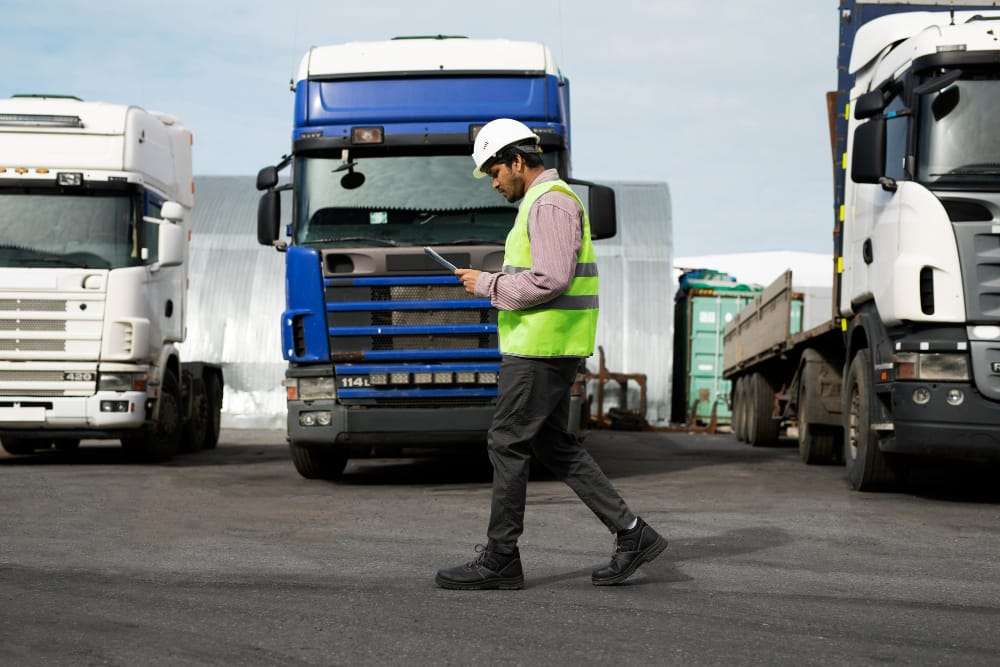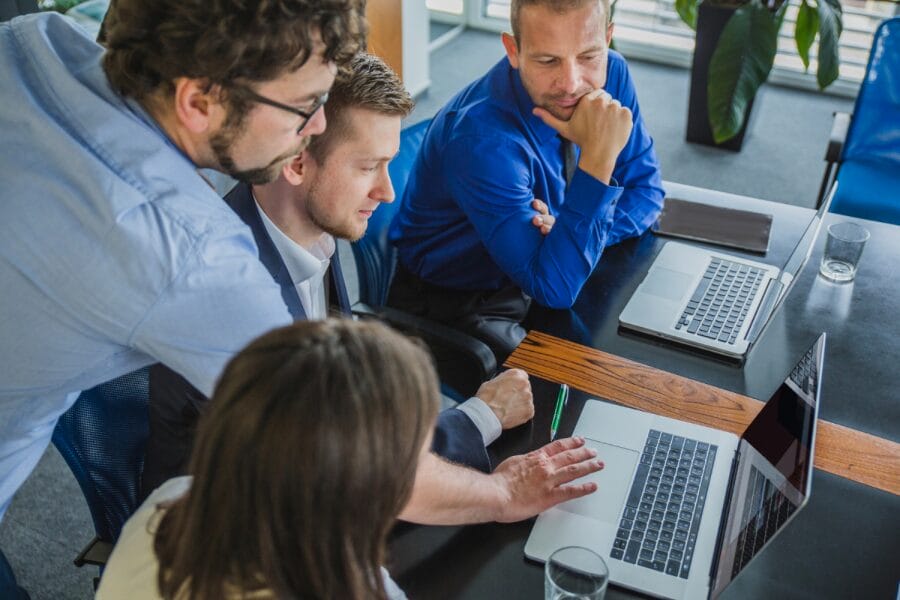Any software development project is a risk. It especially concerns the development of innovative machine learning solutions. The development of an AI proof of concept (PoC) which is basically a prototype of a proposed solution, can help a business validate the idea with limited spending.
C-level executives are commonly rational about investing resources into projects. This post will help you get an idea of how an AI PoC can help minimize the risks of wasting the budget and improve the solution’s performance. It will also delve you into the steps of creating your first AI PoC and familiarize you with some successful proof of concept examples.
Why is creating a PoC important to AI development?
Going with PoC development first is the right call nearly at all times. Here are some of the reasons why:
- It allows to validate the feasibility of an AI solution before large-scale investing. For instance, when considering generative AI in marketing, an AI PoC can serve as a testing ground for refining the solution functionality before committing to large-scale investments.
- It enables the verification of the AI model’s interpretability. A PoC helps to ensure that the AI model is transparent and can be trusted, which is essential for user acceptance and compliance with certain regulations.
- It helps to identify potential technical challenges, risks, and limitations early on. It also offers an opportunity to develop strategies to overcome these hurdles early in the project.
- It enables to visualize the value and potential impact of the AI solution. It allows investors and stakeholders to obtain a clear picture and provide valuable input for improvements.
- It allows to make informed decisions. An AI PoC fosters buy-in from stakeholders, bridging the gap between technical teams and decision-makers.
After creating and examining an AI PoC, a company may come to one out of three possible outcomes. These are basically successful or failed prototype or a prototype that needs further improvement. Here are some conclusions that derive from the outcomes and possible actions to take:
- Successful AI PoC
It demonstrates that the technology is viable and capable of achieving the desired objectives. The next step is to implement an AI proof of concept by scaling the solution, optimizing its performance, and addressing any potential limitations or challenges identified.
- AI PoC that requires improvement
Although the prototype is promising, it necessitates further refinement to meet the desired performance criteria or address specific limitations. Model retraining or integrating an AI & big data solution may be required. Enhancing the prototype so it can achieve the desired outcomes and further retesting is due.
- AI PoC that haven’t met expectations
This outcome calls for a careful evaluation of the reasons behind the failure, such as insufficient data, flawed model architecture, or inadequate algorithms. Based on this analysis, it may be necessary to revisit the problem statement, reassess the approach, and potentially explore alternative AI solutions, abandoning the initial PoC early.
The big idea here is that any outcome of a PoC is useful to the project. It either helps to produce a better solution or saves a considerable amount of resources that overwise would be wasted on an unsuccessful solution.
Scenarios when AI PoC is a must
It’s safe to claim that creating a prototype of an intended solution first is the right call at all times. However, in some cases, it’s even more crucial to start with a solid AI PoC. These include:
1. Innovative technology or method
If an AI project is based on a technology or a method that has not been previously proven, then a PoC is to validate the technology and an approach.
2. High-risk projects
If the AI project is considered high-risk, a PoC is a must. Reasons for a project to be high-risk include: significant capital investments needed, the impact of an AI PoC on critical business or its involvement with sensitive data, highly regulated business domains, etc. An AI PoC helps to mitigate risk by testing the solution in a controlled environment.
3. Complex projects
The AI project usually involves the usage of complex business processes, innovative algorithms, or datasets of bad quality. The PoC will ensure that the system can manage the complexity and yield the desired outcomes. It also allows stakeholders to understand the interplay between different elements in the system.
4. Uncertain data quality or availability
Sometimes it may be difficult to claim the suitability of the data for the proposed AI solution. An AI PoC helps to address issues of uncertain data quality or availability preventing the wastage of resources on larger projects.
Additionally, business owners or AI engineers may be willing to start with an AI PoC when the project requirements are not sufficient or for other significant reasons.


Scenarios when it’s possible to go without AI PoC
The PoC approach is extremely helpful in the vast majority of cases. But here are some cases in which going without this phase comes with minimal risks to a project’s success:
1. Small projects with low risk
Lower-scale solutions, especially ones that have likely been tested and validated extensively by others in the industry, reduce the need to conduct feasibility testing.
2. Well-established and widely used technologies
If the AI project’s idea and its implementation approach are well documented from functional and technical perspectives and there are comprehensive guides and successful use cases, you might not need a PoC.
3. Shortage of time
An AI PoC offers a quick, focused validation of the AI solution feasibility, reducing risk before diving into full-scale development. It can quickly demonstrate the potential benefits, or the lack thereof, saving valuable time in the decision-making process and offering a faster go-to-market.
4. Minor changes or updates to existing well-known system
If a project has already passed the initial stages of development and testing, and a development team can likely on prior work to understand the viability and potential of the solution, a PoC may not be required.
The big idea to keep in mind — a PoC is to make project investments more justified and the end cost of a solution more optimal. Skipping the PoC phase is unlikely to offer you any cost advantage.
Benefits that businesses gain from AI proof of concept
For the consideration of C-level executives, AI PoC has what to offer in exchange for a feasible investment. Here are some of the AI proof of concept benefits:
- Risk reduction. Early identification of issues due to a PoC mitigates the technical and functional risks of full-scale implementation.
- Resource optimization. A prototype allows businesses to assess required resources, preventing over or under-allocation.
- Confidence boost. A successful demonstration of a PoC reassures stakeholders of the project’s feasibility and potential returns.
- Market validation. A prototype provides an opportunity to gauge customer response and validate market demand for the solution.
- Standard compliance assurance. A PoC helps ascertain that the solution meets industry standards and regulatory requirements.
- Cost reduction. Early identification of potential issues can prevent costly fixes or modifications in the future.
- Roadmap provision. The outcomes of a PoC can guide the development of a more accurate and effective project plan.
5 steps to guide your first AI proof of concept
Now, when we’re ready to build a successful PoC, let’s review the steps to follow on this path. From a certain perspective, the AI PoC development process is pretty much the same as with regular software solution development, but on a lower scale. Here is how a 5-step AI PoC creation will look like in most times:
#1 Determine what problems you want to solve with AI
Preparing for an AI proof of concept starts with assessing organization’s needs and challenges. It’s followed by identifying where automation or predictive AI can enhance efficiency and productivity, adding real value this way. A clear problem statement serves as a roadmap, ensuring that stakeholders and engineers are on the same page.
Besides, engaging with different business units is also due. This phase involves a fair amount of brainstorming and discussion to ensure that the AI initiative is focused, targeted, and able to deliver substantial business benefits.
#2 Data selection and preparation
According to the GIGO concept, the quality of AI model training heavily depends on the quality of prepared data. So, it’s crucial to identify relevant sources of structured and unstructured data and prepare datasets.
Data preparation involves cleaning the data, removing inconsistencies, and filling in missing values. A robust data governance framework should be put in place to manage, protect, and enhance the value of data assets.
Read also: Data Preparation in Machine Learning
#3 Designing and building an AI PoC
Companies may choose to develop a proof of concept themselves or outsource the work to a software development agency that specializes in AI. In the case of the latter, you get external expertise and flexibility in project management.
When designing an AI solution, you should carefully consider organization’s technical capabilities, resources, and timelines. You should also be ready to experiment with different algorithms and models to find the one that suits the intended solution the best.
Should you need a trusted partner for building PoC, don’t hesitate to reach out to Intelliarts. Our team provides custom machine learning solutions.
#4 AI PoC evaluation
After creating the AI model, you should evaluate it thoughtfully. The performance test involves using a portion of your dataset to test the model and confirm whether it can generate valuable, actionable insights. Metrics such as accuracy, precision, and recall can be used to measure the model performance.
It’s also essential to evaluate the AI model from the business perspective. Does it solve the problem you initially set out to tackle? Is it providing actionable insights that can lead to better decision-making or operational efficiency? An AI PoC is hardly about technical perfection. It’s rather about assessing the potential value of the future solution to the organization.
#5 AI PoC revalidation or scaling
Basically, this step brings to one of the three AI PoC outcomes, which are successful, partially successful, and failed PoC. If the AI model has proven its effectiveness and value to a certain degree, it’s time to re-validate the concept. Re-validation involves refining the model based on learnings from the initial deployment, adjusting parameters, or adding more data to improve its performance.
Scaling up means expanding the use of the AI model. It’s moving toward the full-scale development of a high-performing AI solution using the experience gained from a PoC. Scaling up should only be considered when the model has proven the potential to bring value.
Read also about the AI for network marketing use case.
Intelliarts experience with AI PoC
Here at Intelliarts, it’s our common practice to start an AI project with a PoC. In cases when a client is unsure about the task or when it’s impossible to know exactly if the solution will work, a PoC serves as our coverage of some kind.
Typically, work on a PoC lasts about 6-8 weeks. We test the viability of an idea and task requirements and produce a basic, limited version of the intended solution. A PoC performs the task but is restricted in terms of functionality and performance. It also doesn’t take into account edge cases, doesn’t work very fast, etc.
We validate whether the model created under a PoC solves the problem well or not. If it was decided to move forward with the project, we proceed with fully-fledged development. We retrain, improve, tune, evaluate, and only then deploy a finished model. Basically, with a PoC, we undergo the full AI development process, as shown in the infographics below, but on a limited scale.

Use cases of AI PoC from Intelliarts portfolio
Here are three AI PoC examples developed by Intelliarts to test the possibility of solving a proposed business problem:
Computer vision demo ML model
This computer vision in insurance demo presents a car damage detection ML solution. As a PoC, it offers limited functionality, which is enough for an overview and testing of its usability, such as the capability to identify damaged areas and car parts. The business challenge intended to solve with this PoC was automated claims processing in insurance.
The computer vision demo can be accessed in the Hugging Face environment.
You may discover more about engineering a two-model computer vision solution from our other article.
Visual search demo ML model
This demo presents a visual search solution. As a PoC, it offers limited capabilities to suggest goods and products available on the web-based on an input image or video frame. The business challenge intended to solve with this PoC was visual searching in e-commerce.
The visual search demo can be accessed in the Hugging Face environment.
You may discover more about visual search in E-Commerce and demo ML model from our other article.
List stacking and predictive model for real estate businesses
The solution presents an ML-based system that prioritizes homeowners based on their motivation to sell the property and make a discount. In this project, we started with a PoC which later was scaled to a fully-fledged solution. The business challenge intended to solve with this PoC was to predict a homeowner who is going to sell a house before the house is put up for sale.
Final Take
The impact of an AI PoC on a project’s outcomes is hard to overestimate. Despite there being instances when this stage can be omitted, for the majority of cases starting with an AI PoC is the right call. It provides a clear roadmap, minimizes risks, allows for better resource allocation, enhances the performance of an end solution, and many more.
Entrusting your AI endeavor to an organization that specializes in IT consulting services, can prove to be a game-changer. With a strong focus on an AI Proof of Concept, our highly experienced team can ensure that your journey toward digital transformation is both productive and successful, maximizing the value of your investments with our AI development services.
FAQ
1. How does the proof of concept of AI affect business?
Proof of concept for AI helps businesses understand how new technologies can improve their processes, reduce costs, or increase revenue before fully investing, reducing financial risk and allowing for strategic planning.
2. Do you really need to implement an AI PoC project?
Implementing an AI PoC project is advisable when a business problem is complex or novel. A PoC provides a low-risk environment to test if AI can provide a viable solution, saving resources in the long run.
3. How to tell a PoC was successful?
A successful PoC exhibits reliable results, aligns with business objectives, and shows a clear path for scalability. It should confirm the viability of the proposed AI solution to the business problem.











